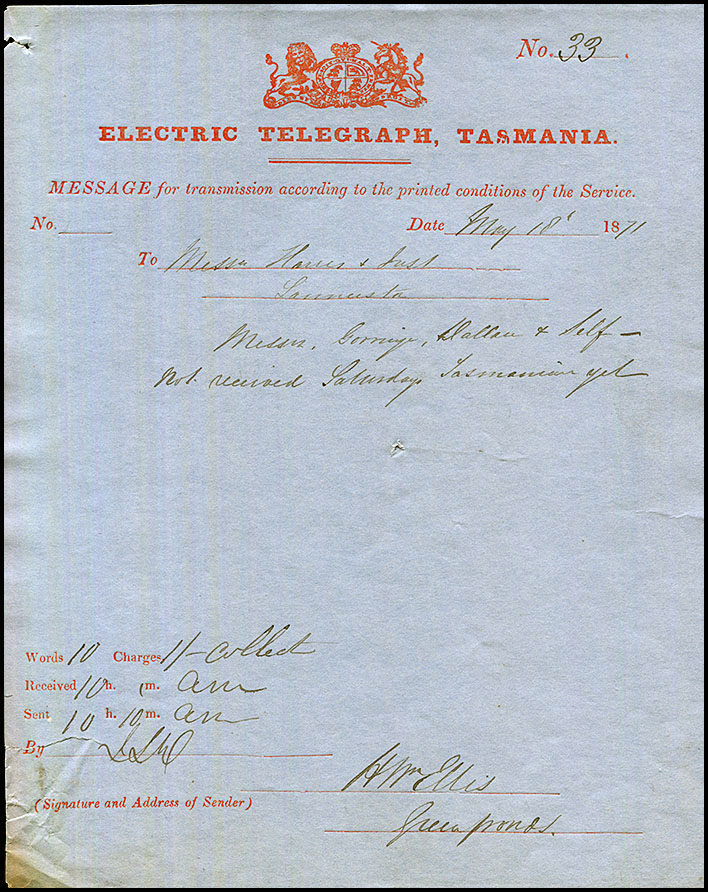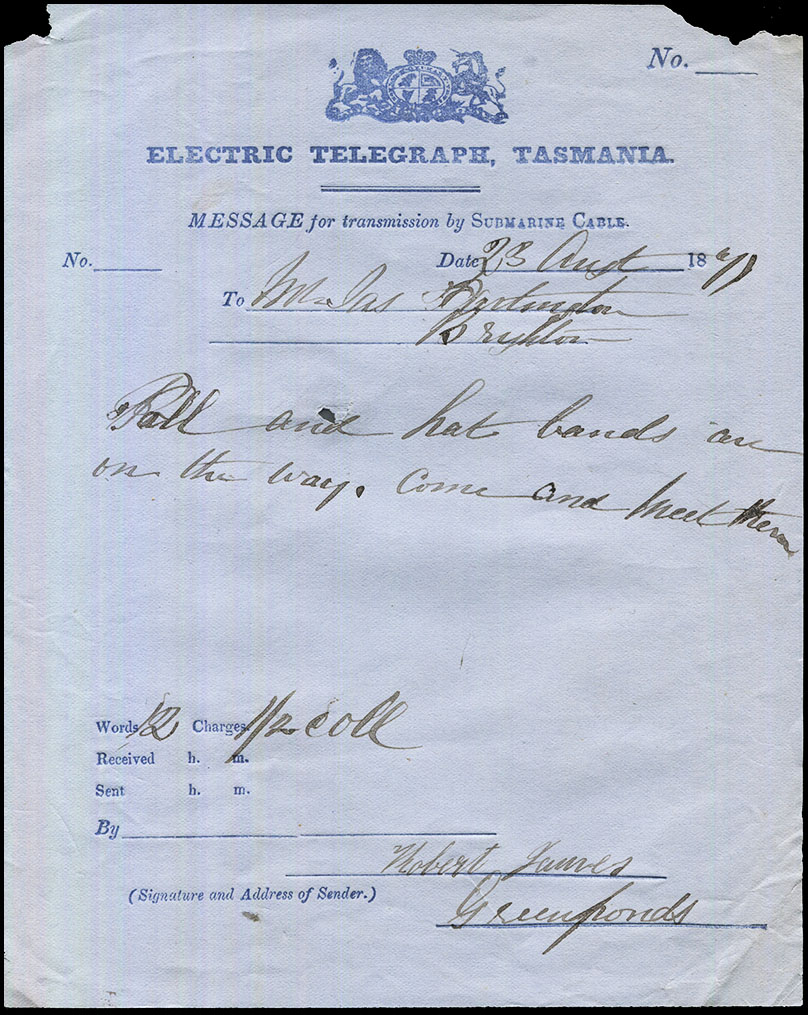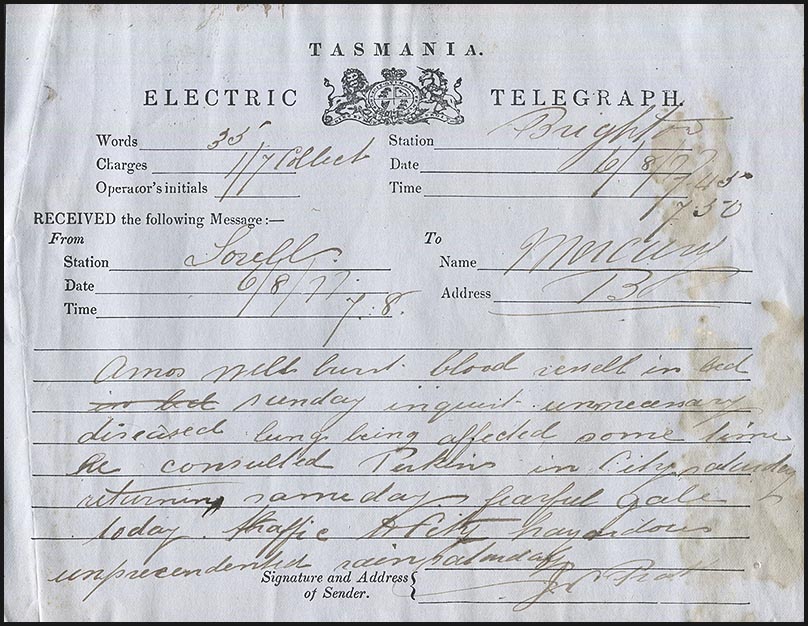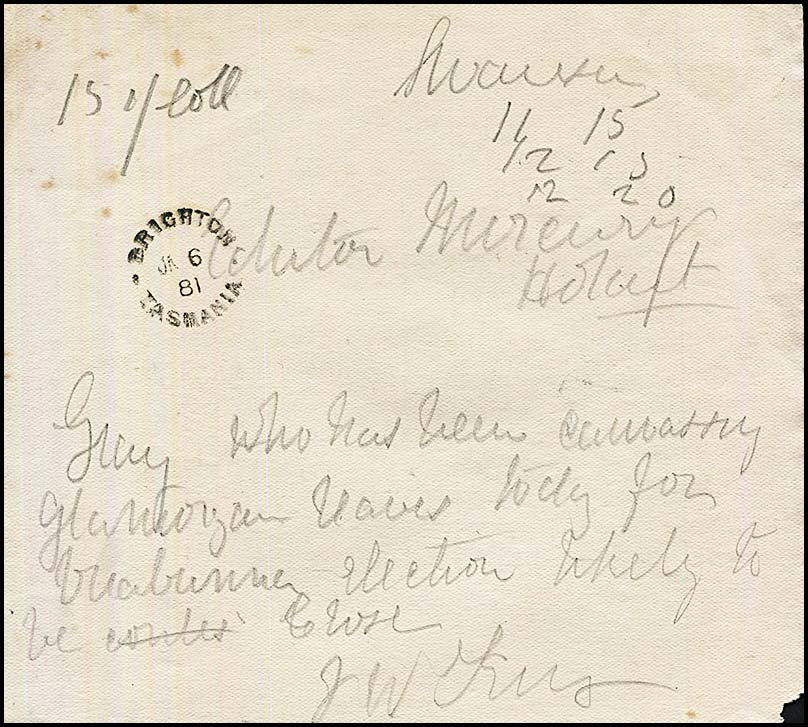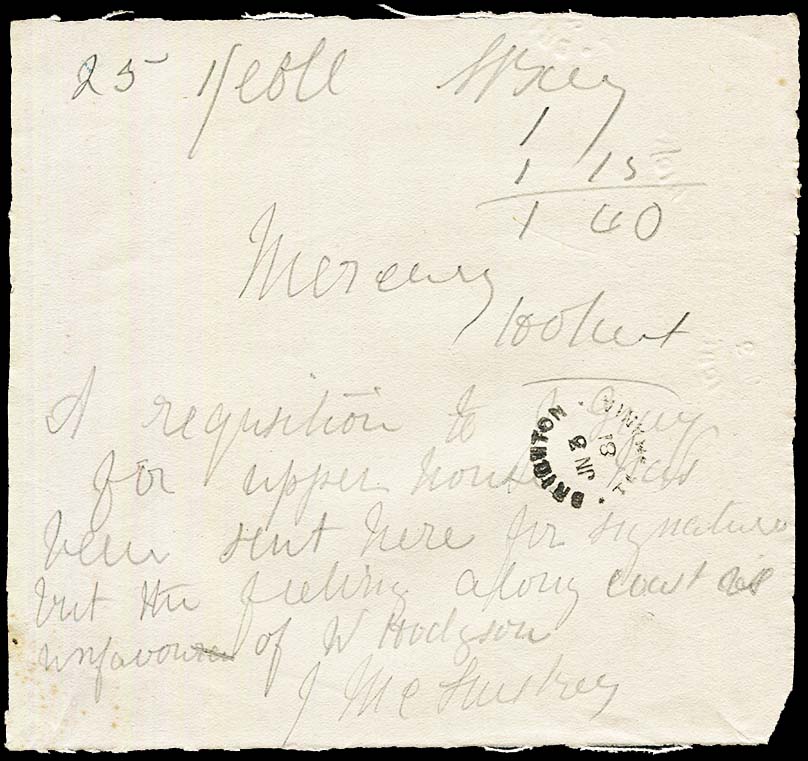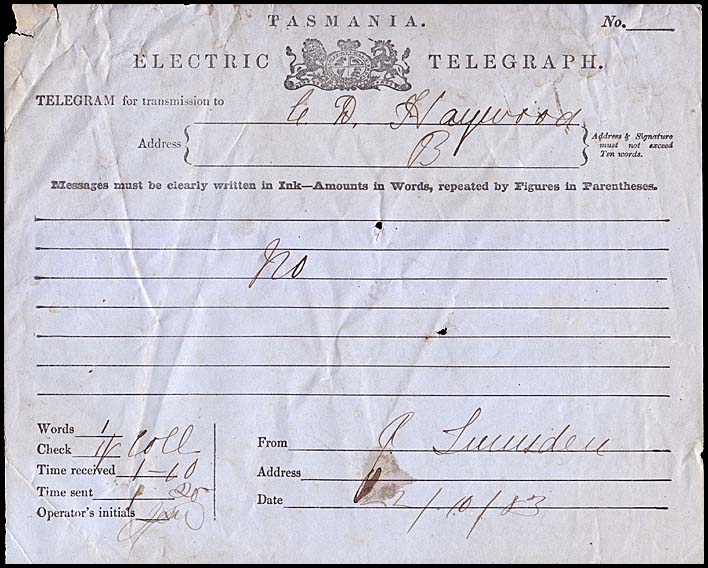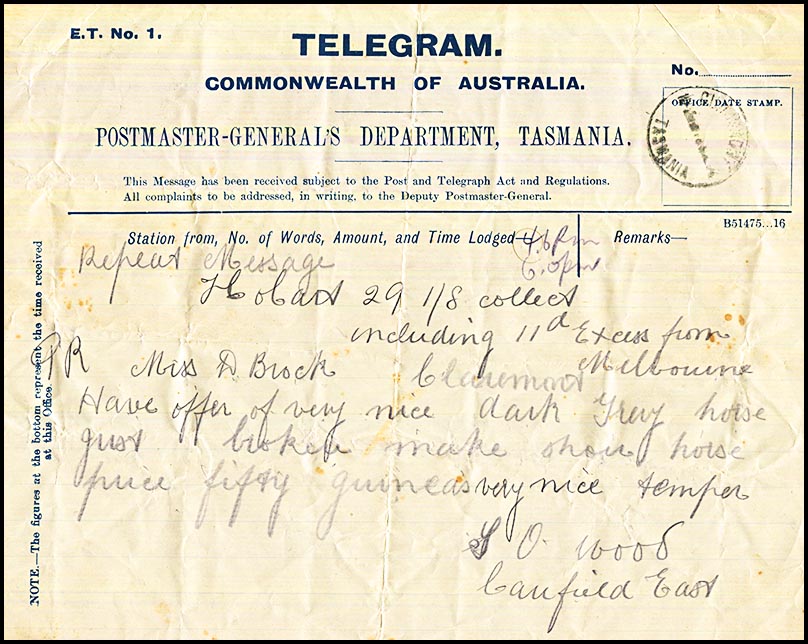Instructional marking - COLLECT.
- Australia 1901-1988
- New South Wales
- Queensland
- South Australia
- Tasmania
- Victoria
- Western Australia
- International
- Special aspects
The COLLECT facility was available to users of the telegraph system to send a telegram and charge the cost to the recipient of the telegram. This facility was referred to as COLLECT TELEGRAMS.
Such a use was not unusual and the practice was adopted in all Australian Colonies as well as being continued well into the Australian era - and of course with more watchfulness and more forms. All the Colonies provided the COLLECT facility by simply requiring a sender to annotate the transmission form with the word COLLECT. The Operator would calculate the cost and add that to the message on the transmission form after the added word. The recipient of such a telegram would then be notified that a telegram had arrived for them or a messenger would bring it to the address shown and the recipient would pay the required amount before being able to access their telegram. If the potential recipient of a Collect Telegram refused to pay the cost, the sender had to pay together with any other costs.
The Collect system was sometimes used to advertise goods and services to people who paid the fee necessary before realising what the message was.
Unfortunately there are always those in the community who wish to rort any system for their own greedy interests.
Having adopted the system, the Tasmanian authorities - in concert with those in other Colonies - decided about 1882 - to discontinue the facility. The Mercury of 24 February 1883 reported the following Letter to the Editor:
"Sir -
An announcement appeared in your issue of Thursday stating that in future no "collect" telegrams will be received except for Press or on "reply paid for" telegrams, thus doing away with the guarantee system which enabled persons to forward "collect" telegrams on guaranteeing their payment.
Pardon me for saying that I am astonished this matter should have escaped your usually vigilant observation and that, consequently, no protest has been made in the interests of the public against an infringement of their already scant enough privileges. It seems to me, Sir, that every possible hindrance is placed in the way of intercolonial telegraphy and that the Government supuinely adopt any rules and regulations that certain narrow-minded authorities choose to frame to save themselves a little trouble.
Yours, etc. PROGRESS".
There are many examples of COLLECT telegrams for Tasmania. Some of these are on ad hoc forms while others are on the printed transmission forms and delivery forms.
|
|
|
|
NOTE: The W. for Hodgson was counted as a word. Interesting follow-up to previous ad hoc form. Message reads: Dear Reader: The Mercury published the details on 8 June 1881 of the lead-up to the Pembroke election. The paper felt strongly that Mr. Hodgson would win. On 9 June, the story of friendship between the two continued.Election Day was 18 June |
|
See also form TC-DO-3B used at Sorell on 6 August 1871 with 1/7 Collect.
The practice of using COLLECT continued in Tasmania although increasingly under the control of the Australian Government.
|
